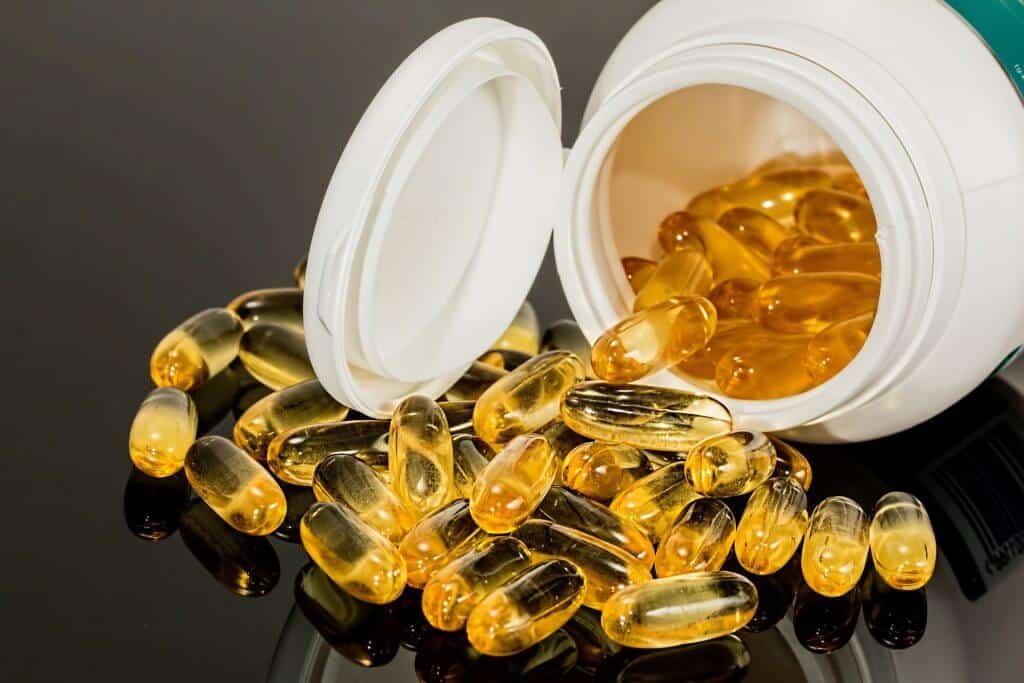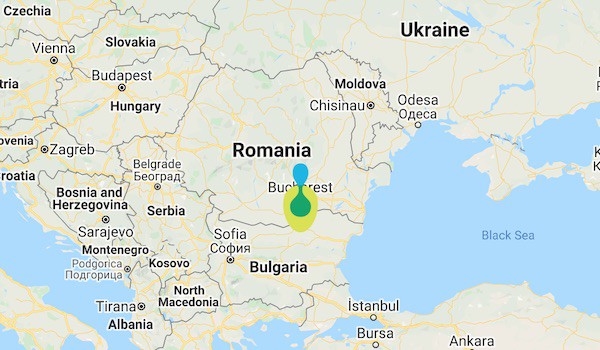When it comes to advising cancer patients about what they should and shouldn’t eat, removing “animal protein” is the general advice recommended by people who don’t understand what the malignant cell actually “feeds” on.
Cancer is an extreme diagnosis with a strong psychological and social impact on both the patient and his / her family and entourage. Many people feel the need to give advice to the patient, but despite good intentions, most of these tips are based on personal ideas that feel like common sense rather than on in-depth understanding of the:
- malignant cell biochemistry: the Warburg effect (1), the Crabtree effect (2),
- metabolic impact of the treatment: dysbiosis (3), dyslipidemia (4), leptin resistance (5),
- metabolic impact of the disease: low adiponectin (6), high insulin ± insulin resistance (7), sarcopenia (8), and so on.
Despite good intentions, eliminating meat, dairy, eggs or other food of animal origin on the grounds that “the cancer cell feeds animal protein” is neither necessary nor useful for cancer patients for at least two reasons:
- there is no human cell that feeds on animal protein
I want to warn any cancer patient that a person who argues that the “malignant cell feeds animal protein” probably did not take a class of physiology or biochemistry in his life, or his mind wondered on Facebook while he was in class because there is no human cell that feeds on proteins, any proteins – be it animal or vegetable.
Scientifically, we can say that “cells can also feed on amino acids”.
But absolutely no cell can feed on proteins, be it vegetal or animal.
In starvation conditions, where blood glucose falls below 50-60 mg/dl, glucagon helps us survive by nourishing the cells of internal organs, brain and blood with glucose obtained with ATP energy expenditure from the muscles constitutive aminoacids (a process called “gluconeogenesis”). But even under such extreme conditions, we do not feed ourselves with proteins, but with amino acids either converted to glucose, either integrated into the Krebs cycle.
Ingested proteins should be digested completely to pass through the intestinal wall without generating allergies (9). Moreover, proteins are not meant to be used to feed anything, being nutrients for other functions and not for energy supply.
Only after being used for all the functions they are meant to do inside the body, and only if some amino acids still remain unused, and only if there are no monosaccharides or fatty acids available – then and only then amino acids can be used to “feed” some types of cells.
Claiming that the “malignant cell feeds on animal protein” is like sticking a label on your forehead that “Intestinal protein digestion does not exist”.
Because after intestinal digestion, there are only amino acids of any origin in the portal blood.
The only thing important is that in this portal blood we have all the 9 essential amino-acids.
If those 9 essential amino acids are absent or if they were in suboptimal proportions, the body will take them directly from muscle proteins, because:
- it cannot work without them,
- it cannot make them from other non-essential amino acids, from carbohydrates or from fats,
- it cannot store them, because amino acids are the only nutrients that cannot be stored in the body
And strictly from the point of view of the essential amino acid content, foods we eat from animals contain all the essential amino acids in optimal proportions for the human body.
Now leaving aside the essential amino acid content of the plants we eat, the main amino acid involved in the malignant cell metabolism is glutamine (10).
But glutamine exists in all food sources of proteins:
- meat, dairy and eggs,
- beans, peas, lentils, soybean, chickpeas,
- spinach, parsley, cabbage, red beet (fruit and vegetable freshly squeezed juices being one of the best sources of glutamine).
And if we were to remove all the glutamine food sources:
- it would be in vain, because glutamine is not an essential amino acid = the body can synthesise it without any food intake, being one of the most abundant amino acids in the body
- it would be harmful, because glutamine is involved in:
- preventing weight gaining during chemotherapy by preventing dysbiosis and sarcopenia (11,12)
- preservation of neurophysiological functions (mood, concentration, memory) (13)
- prevention of anemia (14)
Healthy people do not need additional food intake of glutamine.
But in people with low immunity, intense stress or after surgery, glutamine should be supplemented by intake of foods rich in protein (for example meat, dairy, eggs, beans, peas, lentils) and vegetables (15).
And vegetable proteins foods are no better than animal proteins foods because:
- they also contain nitrates (16), fertilizers and fungicides that can be either as harmful (17) or more harmful (18) than the non-metabolised trace of antibiotics and hormones that might be found in some types of low quality meat or poultry (19)
- vegetable proteins also contain glutamine, just like animal proteins
The latest oncological nutrition meta-analyses of the available studies show that only processed meat (sausage, roasted meat) associates an increased risk of cancer, not meat per se. (20).
So, we do not need to remove from the diet or diminish the intake of protein, neither vegetal nor animal food, from the diet of oncological patients, but to ensure that the protein intake is optimal to keep the patient’s health during oncological treatment (21,22).
- all human cells, including the malignant ones, prefer to feed on glucose
For many people, to recommend moderate consumption of lean meat, dairy products and eggs may seem blasphemy when it comes to oncological patients. But nutrition is not about what people are taught to think, is about physiology. The body works as it works either if you agree with it or not. And most often than not most people have no idea about how the body actually works, making all sorts of assumptions that sound like common sense.
But, the physiology of the malignant cell is far, far, far from common sense: cancer cells do not feed on animal proteins or any proteins for that matter.
As any other cells in the human body, malignant cells prefer to use carbohydrates.
And foods of vegetable origin are predominant sources of carbohydrates directly usable by the malignant cell for survival and proliferation (23).
Of course, that does not mean going to the other extreme – from recommending the avoidance of foods of animal origin, to recommending the avoidance of foods of the plant origin. Not eating food sources of glucose – either by fasting or by ketogenic diets – brings no benefit for a cancer patient because when you take out glucose you get ketones. And ketones stimulate tumor growth and metastasis (24).
Oncology nutrition does not mean hearing one piece of information with one ear getting it out on the other ear with a diametrically opposed sense.
Oncology nutrition means:
- continuously adapting patient’s diet to the physiological needs of the body undergoing each stage of the oncological treatment
- and moderation in absolutely everything – „everything“ that includes even giving nutritional advice to cancer patients by people – medically trained or not – who know not what really happens to food after the food passes their mouth
Oncology nutrition practice requires one of the highest levels of nutrition training there is, health care personnel without a solid background in nutrition just giving general, common sense advice just like any other untrained people.
This is because – in order to make proper oncology nutrition recommendations – we need to understand how and what the malignant cells use to obtain energy for survival and proliferation, unlike the healthy cell, the complexity of the tumor’s biology and the metabolic impact of the treatment applied on patients with different health statuses.
The main features of malignant cells that influence what they prefer to use as main nutrients involve:
- changes in the surface of the cell membrane
- changes in the use of glucose in the presence of oxygen, exactly as in hypoxic conditions (“aerobic glycolysis”) (25).
Thus, when it comes to oncological nutrition, GLUT proteins (especially 1, 3, 4 and 12) are small stumps that break down the big cart of the common sense of people without real nutrition studies (26).
Because cell membranes are impermeable to glucose, cells use GLUT transmembrane transporters to introduce glucose and fructose into cells.
Healthy cells have only one type of transmembrane glucose transporter, neurons such as GLUT 3, striated muscle cell – GLUT 4, red blood cells – GLUT 1, and hepatocyte and pancreas cell having GLUT 2.
But the malignant cell has 4 types of transmembrane glucose transporters: GLUT 1, GLUT 3, GLUT 4, and GLUT 12 – acting like black holes, absorbing glucose from any possible source, be it external (from food) or internal (from gluconeogenesis) (27).
And:
- not only does the malignant cells “absorb” more blood glucose than any normal cell could ever do because of the abundance of GLUT transporters (28, 29),
- but it also uses it inefficiently, continuously depriving healthy cells from this essential nutrient (30).
This energy-inefficient way to use glucose under aerobic conditions (with oxygen in the cell) using glucose as a normal cell under anaerobic conditions (no oxygen in the cell) is called the Warburg effect.
Otto Heinrich Warburg demonstrated in 1924 that malignant cells use glycolysis instead of oxidative phosphorylation (the Krebs cycle), despite the presence of oxygen in the cell. This effect can be objectively demonstrated by increasing the level of lactate dehydrogenase (LDH) (31).
But not all malignant cells get into Warburg effect.
And it seems that the malignant cells that enter aerobic glycolysis do not do this to hurt healthy cells by depriving them of essential food (or not only for that reason), but because of the biochemical reactions chains of aerobic glycolysis they get the substances they need for accelerated proliferation (32).
In addition, in order to demonstrate the capacities of maximum survival and adaptability, the malignant can stop aerobic glycolysis when necessary – and hence temporarily stop their growth and proliferation – and just sit there and survive without any problems until the resumption of favorable conditions, just like a chameleon, by switching back to the use of glucose in the Krebs cycle as a normal cell (Crabtree effect) (33).
The ability to procure the necessary biomass for proliferation through aerobic glycolysis (Warburg effect = proliferation) alternatively with the ability to stop doing so (Crabtree effect = survival by temporarily stopping proliferation) influences cancer treatment efficacy, the new therapies targeting inhibition of aerobic glycolysis being ineffective in completely eradicating some malignant cells that can survive through these alternative mechanisms, increasing the risk of post-treatment recurrence (34).
These effects have been known for over 80 years, and people who still claim that the “malignant cell feeds on animal protein” either have not heard of intestinal protein digestion and malignant cells biochemistry, or they are trying to sell you something.
The effects of Warburg, reverse Warburg and Crabtree, entosis, ketogenesis, gluconeogenesis, and de novo lipogenesis are the small stumps that overturn the great cart of common sense of the people that without a solid background in oncology nutrition nutrition and without a solid clinical practice with cancer patients (35,36).
Removing “animal proteins” from a cancer patient’s diet and feeding him only with vegetables, fruits, kernels, beans and other foods of vegetable origin brings a high intake of glucose easy to use by malignant cells, packed with a lower satiety and a lower ability to overcome oncology treatments’ side effects (37).
Unfortunately:
- cancer is an extremely unpredictable disease, the shallow elimination of the “animal proteins” not affecting the survival malignant cells, but the survival of the healthy cells
- perfect food does not exist; vegetables, fruits, vegetables, and cereals that are truly organic still contain substances that can be as harmful or more harmful than those as meat, dairy or eggs;
- the malignant cell is more adaptable and more unpredictable than people who recommend veganism as universal panacea can conceive (38).
Biochemically, malignant cells that thrive despite the more or less vague or argumentative personal opinions of self-proclaimed nutrition experts.
Quoted studies
(1) Vander Heiden, Matthew G., Lewis C. Cantley, and Craig B. Thompson. “Understanding the Warburg effect: the metabolic requirements of cell proliferation.” science 324.5930 (2009): 1029-1033.
(2) Redman, Emily K., Paul S. Brookes, and Marcin K. Karcz. “Role of p90RSK in regulating the Crabtree effect: implications for cancer.” Biochemical Society transactions 41.1 (2013): 124.
(3) Schwabe, Robert F., and Christian Jobin. “The microbiome and cancer.” Nature Reviews Cancer 13.11 (2013): 800-812.
(4) Emaus, Aina et al. “Metabolic profile, physical activity, and mortality in breast cancer patients.” Breast cancer research and treatment 121.3 (2010): 651-660.
(5) Garofalo, Cecilia, and Eva Surmacz. “Leptin and cancer.” Journal of cellular physiology 207.1 (2006): 12-22.
(6) Dalamaga, Maria, Kalliope N. Diakopoulos, and Christos S. Mantzoros. “The role of adiponectin in cancer: a review of current evidence.” Endocrine reviews33.4 (2012): 547-594.
(7) Arcidiacono, Biagio et al. “Insulin resistance and cancer risk: an overview of the pathogenetic mechanisms.” Experimental diabetes research 2012 (2012).
(8) Argilés, Josep M., et al. “Muscle wasting in cancer and ageing: cachexia versus sarcopenia.” Sarcopenia–Age-Related Muscle Wasting and Weakness. Springer Netherlands, 2011. 9-35.
(9) Bannon, Gary A. “What makes a food protein an allergen?.” Current Allergy and Asthma Reports 4.1 (2004): 43-46.
(10) Zhao, Y., E. B. Butler, and M. Tan. “Targeting cellular metabolism to improve cancer therapeutics.” Cell death & disease 4.3 (2013): e532.
(11) Souba, Wiley W. et al. “Oral glutamine reduces bacterial translocation following abdominal radiation.” Journal of Surgical Research 48.1 (1990): 1-5.
(12) Klimberg, V. Suzanne et al. “Glutamine-enriched diets support muscle glutamine metabolism without stimulating tumor growth.” Journal of Surgical Research 48.4 (1990): 319-323.
(13) Ziegler, Thomas R. “Glutamine supplementation in cancer patients receiving bone marrow transplantation and high dose chemotherapy.” The Journal of nutrition 131.9 (2001): 2578S-2584S.
(14) Oburoglu, Leal et al. “Glucose and glutamine metabolism regulate human hematopoietic stem cell lineage specification.” Cell stem cell 15.2 (2014): 169-184.
(15) Moynihan, Paula J. “The role of diet and nutrition in the etiology and prevention of oral diseases.” Bulletin of the World Health Organization 83.9 (2005): 694-699.
(16) Hord, Norman G., Yaoping Tang, and Nathan S. Bryan. “Food sources of nitrates and nitrites: the physiologic context for potential health benefits.” The American journal of clinical nutrition 90.1 (2009): 1-10.
(17) Türkdoğan, M. Kürsad et al. “Heavy metals in soil, vegetables and fruits in the endemic upper gastrointestinal cancer region of Turkey.” Environmental Toxicology and Pharmacology 13.3 (2003): 175-179.
(18) Paro, Rita et al. “The fungicide mancozeb induces toxic effects on mammalian granulosa cells.” Toxicology and applied pharmacology 260.2 (2012): 155-161.
(19) Ghidini, Sergio et al. “16 Chemical Residues in Organic Meats Compared to Conventional Meats.” Organic Meat Production and Processing 53 (2012).
(20) Mourouti, Niki et al. “Meat consumption and breast cancer: A case-control study in women.” Meat science 100 (2015): 195-201.
(21) Paddon-Jones, Douglas et al. “Protein, weight management, and satiety.” The American journal of clinical nutrition87.5 (2008): 1558S-1561S.
(22) Capuron, Lucile, and Robert Dantzer. “Cytokines and depression: the need for a new paradigm.” Brain, behavior, and immunity 17.1 (2003): 119-124.
(23) Greiner, Erich F., Michael Guppy, and Karl Brand. “Glucose is essential for proliferation and the glycolytic enzyme induction that provokes a transition to glycolytic energy production.” Journal of Biological Chemistry 269.50 (1994): 31484-31490.
(24) Martinez-Outschoorn, U. E., Lin, Z., Whitaker-Menezes, D., Howell, A., Sotgia, F., & Lisanti, M. P. (2012). Ketone body utilization drives tumor growth and metastasis. Cell cycle, 11(21), 3964-3971.
(25) Ganapathy, Vadivel, Muthusamy Thangaraju, and Puttur D. Prasad. “Nutrient transporters in cancer: relevance to Warburg hypothesis and beyond.”Pharmacology & therapeutics 121.1 (2009): 29-40.
(26) Barron, Carly, Evangelia Tsiani, and Theodoros Tsakiridis. “Expression of the glucose transporters GLUT1, GLUT3, GLUT4 and GLUT12 in human cancer cells.” BMC Proceedings. Vol. 6. No. Suppl 3. BioMed Central Ltd, 2012.
(27) Calvo, Moisés Blanco et al. “Potential role of sugar transporters in cancer and their relationship with anticancer therapy.” International journal of endocrinology2010 (2010).
(29) Hsu, Peggy P., and David M. Sabatini. “Cancer cell metabolism: Warburg and beyond.” Cell 134.5 (2008): 703-707.
(30) Calvo, Moisés Blanco et al. “Potential role of sugar transporters in cancer and their relationship with anticancer therapy.” International journal of endocrinology2010 (2010).
(31) Schwartzenberg-Bar-Yoseph, Fabiana, Michal Armoni, and Eddy Karnieli. “The tumor suppressor p53 down-regulates glucose transporters GLUT1 and GLUT4 gene expression.” Cancer research 64.7 (2004): 2627-2633.
(32) Walenta, Stefan, and Wolfgang F. Mueller-Klieser. “Lactate: mirror and motor of tumor malignancy.” Seminars in radiation oncology. Vol. 14. No. 3. WB Saunders, 2004.
(33) Feron, Olivier. “Pyruvate into lactate and back: from the Warburg effect to symbiotic energy fuel exchange in cancer cells.” Radiotherapy and oncology92.3 (2009): 329-333.
(34) Diaz-Ruiz, Rodrigo, Michel Rigoulet, and Anne Devin. “The Warburg and Crabtree effects: On the origin of cancer cell energy metabolism and of yeast glucose repression.” Biochimica et Biophysica Acta (BBA)-Bioenergetics 1807.6 (2011): 568-576.
(35) DeBerardinis, Ralph J. et al. “The biology of cancer: metabolic reprogramming fuels cell growth and proliferation.” Cell metabolism 7.1 (2008): 11-20.
(36) Kim, Jung-whan, and Chi V. Dang. “Cancer’s molecular sweet tooth and the Warburg effect.” Cancer research 66.18 (2006): 8927-8930.
(37) Jones, Russell G., and Craig B. Thompson. “Tumor suppressors and cell metabolism: a recipe for cancer growth.” Genes & development 23.5 (2009): 537-548.
(38) Ernst, Edzard, and Barrie R. Cassileth. “Cancer diets: fads and facts.” Cancer Prevention International 2.3-4 (1996): 181-187.





